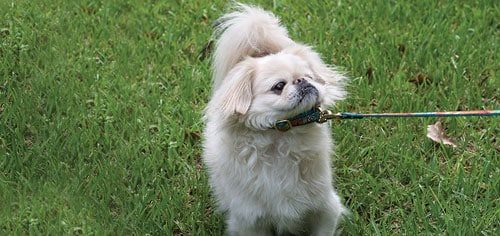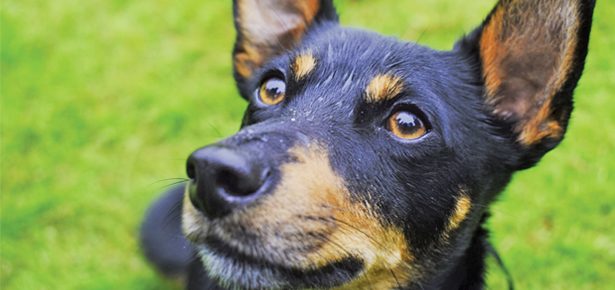

Why Growling is Good
Growling is meant to avert aggression, not cause it. But many owners misunderstand & correct their dogs.
Imagine this: You’re in line at the grocery store. The man behind you is standing very close, and you become uncomfortable. He inches up to where he’s practically touching you. There’s a woman in front of you, and the aisles are narrow. You have no space to move away. What would you do? Most people would turn around and say, “Excuse me” or something similar. But now imagine that your ability to speak was gone. You could try giving the man a stern look, but if that didn’t get the message across, you would eventually be forced to resort to physical measures, putting an arm out to stop him or even pushing him away.
The ability to communicate discomfort is very important to both people and dogs. Growling is a perfectly acceptable canine warning which, roughly translated, means, “Hey, I don’t like that,” “Don’t come any closer!” or “Please stop what you’re doing.” Just as in the grocery store scenario, taking away the ability to politely ask the offender to cease and desist eventually results in having to take physical action, which could result in a dangerous situation for both parties.
Humans are hard-wired to understand that a growl is a threat, so it’s reasonable and even advantageous to become upset when we hear one. But a growl from a dog is actually a good thing. Don’t get me wrong; I’m not suggesting that it’s desirable for any dog to growl at his owner, but again, growling is a non-aggressive form of communication. Whether a dog is growling at another dog or a person, it’s a warning. If the dog wanted to attack, he would. Growling is meant to avert aggression, not cause it. But many owners misunderstand and correct their dogs. The dog then learns that growling leads to being punished and suppresses the growl, which often results in biting with no warning. As a trainer, I’ve seen many cases like that over the years, and they can be both difficult and dangerous to rehabilitate.
Growling has its own spectrum of intensity. If the pitch of a growl deepens, the dog’s arousal level is becoming more intense. The accompanying body language offers information as well. A dog who is standing stock still when growling (as opposed to moving away in fear) is conserving his energy and standing his ground; this is a potentially volatile situation, whereas backing away while growling is the behaviour of a dog who is fearful or conflicted and is attempting to make the big, scary thing go away.
If you are on the receiving end of a growl, whether the dog belongs to you or someone else, the best course of action at the moment is to defuse the situation. After all, the dog’s arousal level is already elevated. You don’t want to shout, or worse, get physical, as those things could lead to a bite. Instead, look down and to the side. This communicates that you’re not a threat, while allowing you to keep the dog in your peripheral vision. Back away slowly. Don’t turn your back if you can help it, as some dogs are more prone to attack from the rear. If the dog in question is your own, address the situation that caused the growling at another time when your dog is calm. For example, if your dog was growling when you touched his paws, you would implement a behaviour modification program designed around a gradual desensitization to having paws touched. Always employ the assistance of a professional trainer if necessary. Remember, growling is simply communication. If we take a moment to assess why a dog is growling instead of automatically taking the attitude that he’s behaving inappropriately, we will react appropriately.
Nicole Wilde is an award-winning author of ten books on canine behaviour. Her books, seminar DVDs, and Wilde About Dog blog can be found at nicolewilde.com.
Join the newsletter and never miss out on dog content again!
"*" indicates required fields
By clicking the arrow, you agree to our web Terms of Use and Privacy & Cookie Policy. Easy unsubscribe links are provided in every email.





